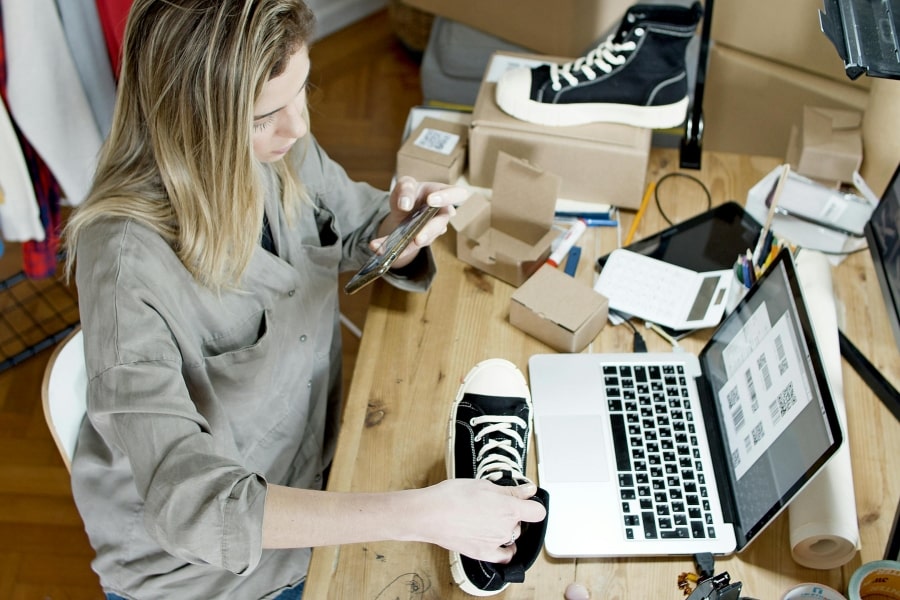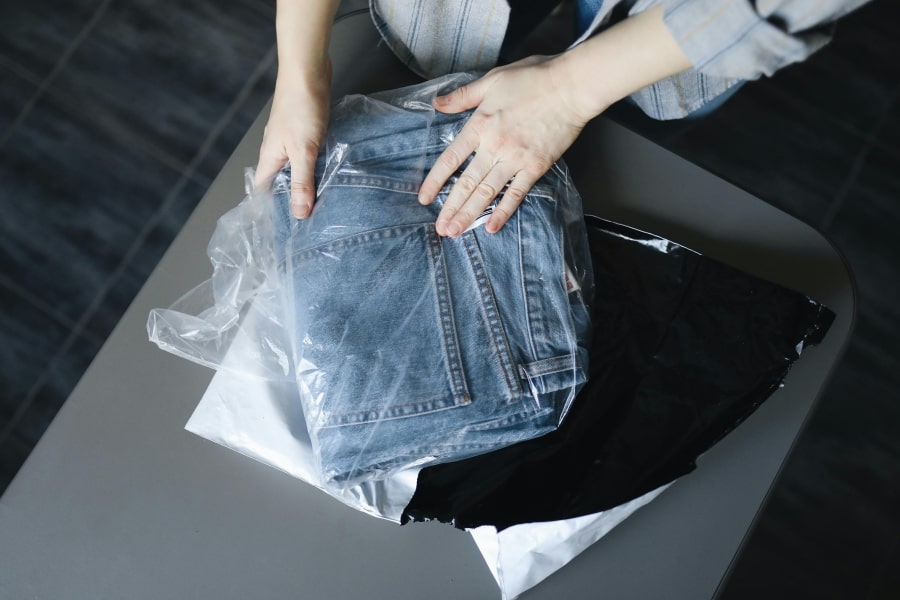EU Packaging & Packaging Waste Regulation: what e-commerce brands need to know
Written by
Editorial TeamPublished on
The EU Packaging & Packaging Waste Regulation is reshaping how e-commerce brands approach sustainability, with stricter rules on recycling and packaging design. Discover how ecosistant can simplify compliance, helping your brand meet these new standards while positioning itself as an eco-friendly leader in the market. Click here to learn more! (Ad)

Commercial collaboration
The EU Packaging & Packaging Waste Regulation (PPWR) is one of the most significant regulations that Direct-to-Consumer (D2C) brands must be aware of as the e-commerce market continues to expand across Europe, presenting increasing regulatory challenges. This regulation directly impacts how brands handle their packaging, ensuring it aligns with environmental and sustainability goals.
In this article, we’ll explore the current status of the EU Packaging & Packaging Waste Regulation, what changes are on the horizon, and how D2C brands can remain compliant. Additionally, we’ll delve into the crucial role of an EPR Authorized Representative in navigating these regulatory waters.
Current Status of the EU Packaging & Packaging Waste Regulation
The EU Packaging & Packaging Waste Regulation has been a cornerstone of European environmental policy for years. Its primary goal is to minimize the environmental impact of packaging by promoting reuse, recycling, and the reduction of packaging waste.
Currently, the regulation is a part of a larger EU strategy to transition to a circular economy, the so-called EU Green Deal. Packaging, particularly in e-commerce, is one of the main contributors to waste, and the EU aims to address this by enforcing stricter rules on packaging materials and recycling rates.
For D2C e-commerce brands, this means a need to rethink packaging strategies, focusing on sustainability. Failure to comply can result in substantial fines and penalties, which can be detrimental to the business.
What’s Coming: Updates to the EU Packaging & Packaging Waste Regulation
While the current version of the EU Packaging & Packaging Waste Regulation provides a solid framework, the EU is already working on revisions to further tighten the rules. Here are some of the key changes expected in the near future:
Increased Recycling Targets
The EU aims to push recycling rates even higher, with specific targets set for different types of packaging materials, such as plastic, paper, and metal. E-commerce brands will need to ensure that their packaging is not only recyclable but also that it meets the new thresholds.
Reusability Requirements
The updated regulation is expected to place a greater emphasis on reusable packaging. For D2C sellers, this could mean investing in packaging solutions that can be returned and reused, adding a layer of complexity to logistics and supply chains.
Extended Producer Responsibility (EPR)
Under the new rules, producers will be more responsible for the entire lifecycle of the packaging they use. This includes not only the cost of recycling but also ensuring that the packaging is designed with sustainability in mind.
Stricter Compliance Monitoring
The EU will likely introduce more rigorous checks and monitoring to ensure that companies comply with the regulation. This could involve audits and regular reporting requirements, which e-commerce brands must be prepared for.

New Requirements for Packaging Design and Composition
The Packaging & Packaging Waste Regulation introduces several new standards for packaging design, specifically aiming to enhance recyclability. Packaging will now be categorized from A to D based on its recyclability:
- Category A: 95% or more recyclable
- Category B: 80% or more recyclable
- Category C: 70% or more recyclable
- Category D: Less than 70% recyclable
By 2030, all packaging must be recyclable, meaning only those in Categories A to C will be allowed on the EU market. By 2038, only Categories A and B will be permitted. This sets a clear path for e-commerce brands to follow as they adapt their packaging to meet EU regulations.
Furthermore, the regulation includes strict mandates for using recycled materials and reducing packaging waste. It also promotes reusable systems, setting quotas for e-commerce packaging. By 2030, e-commerce packaging within a country must achieve a 100% reuse rate, and cross-border packaging within the EU must reach 40%. However, cardboard packaging, a staple in e-commerce, is exempt from these quotas, slightly weakening the regulations’ impact.
Also, the packaging regulation will introduce an EU-wide harmonized recycling symbol. These symbols will be displayed both on packaging and waste bins to facilitate better waste sorting. It is currently not clear what the new recycling label will look like, but the final design is expected by 2026. National labels like the Triman Logo can still co-exist, but may not interfere with the EU single market. It is likely that they will still play a role for brands that target e.g. the French market specifically.
Extended Producer Responsibility (EPR): What You Need to Know
One of the key elements of the EU regulation for packaging & packaging waste is the expansion of Extended Producer Responsibility (EPR). This means that producers are not only responsible for the production and distribution of packaging but also for its collection, recycling, and disposal.
Under EPR, producers must register in each EU member state where they sell products and provide detailed reports on the quantity and type of packaging they distribute. They are also required to cover the costs of collection and recycling, which increases transparency and encourages more sustainable packaging solutions.
While EPR exists today, the new regulation aims to harmonize these processes across the EU, simplifying reporting requirements but still requiring separate registrations in each country. This means that e-commerce brands selling across the EU will face the challenge of managing 27 different registrations, even with harmonization in place.
The Importance of an Authorized Representative for Compliance
For online sellers without a physical presence in multiple EU countries, the PPWR will introduce a new requirement: the appointment of an Authorized Representative in each member state. These representatives ensure that companies meet EPR obligations in each country where they sell products. This includes managing registration and reporting to local authorities.
For small e-commerce businesses, this presents a significant challenge, as they will need to appoint representatives across multiple countries, which could dramatically increase costs. This new requirement could make it more difficult for small and medium-sized enterprises (SMEs) to compete in the EU market.
To learn more about the role of an Authorized Representative, check out this explainer video:
Obligations for Online Platforms
Beyond producers and sellers, the PPWR also places new responsibilities on online platforms like Amazon and eBay. These platforms must ensure that sellers on their sites are registered in the relevant EU member states where they wish to sell. They are required to collect registration numbers from sellers and verify their EPR compliance.
While this may seem like a new development, some countries like Germany, France, and Spain have already imposed similar requirements on online platforms. In these markets, compliance rates have improved significantly, and illegal sales have decreased as a result. The new packaging regulation will expand these obligations across the entire EU.
How to Stay Compliant with the EU Packaging & Packaging Waste Regulation
Staying compliant with the EU Packaging & Packaging Waste Regulation involves more than just meeting recycling quotas. Here are some practical steps for D2C e-commerce brands:
Audit Your Packaging
Evaluate your current packaging materials and determine if they meet the EU’s recycling and sustainability standards. This might involve switching to eco-friendly materials or reducing the overall amount of packaging used. Empty space in packaging must generally be avoided.
Work with an Authorized Representative
If you’re unsure about how to navigate the EU’s regulatory landscape, consider appointing an Authorized Representative who can ensure your brand stays compliant with the latest regulations. Services like ecosistant.eu help with EU-wide EPR registrations and finding Authorized Representatives for each member state.
Invest in Reusable Packaging
As the EU moves towards more stringent rules on reusability, it’s worth exploring packaging solutions that can be returned, reused, or repurposed. This not only helps you stay compliant but also positions your brand as environmentally conscious.
Stay Informed
Regulations are constantly evolving. Staying updated on the latest changes to the EU Packaging & Packaging Waste Regulation will help you adapt quickly and avoid any compliance issues.
For more insights on how to comply with packaging regulations in Germany, read this guide on the German Packaging Act (VerpackG). Similarly, if you operate in the fashion e-commerce sector, you should be aware of the Textile EPR recycling laws across Europe.

Key Takeways
1. Mandatory Recycling Targets: By 2030, all packaging in the EU must be at least 70% recyclable, and by 2038, only highly recyclable packaging (Categories A and B) will be permitted.
2. Focus on Reusable Packaging: E-commerce brands must adopt reusable packaging solutions, with specific reuse quotas for domestic (100%) and cross-border (40%) packaging by 2030.
3. Extended Producer Responsibility (EPR): Producers are responsible for the entire lifecycle of their packaging, including recycling and disposal, requiring registration and reporting in each EU member state.
4. Authorized Representative Requirement: Non-EU businesses must appoint an Authorized Representative in every EU country where they sell products to ensure compliance with packaging regulations.
5. New Packaging Design Standards: Packaging must adhere to strict recyclability and sustainability guidelines, with clear labeling for recyclability by 2030 and harmonized recycling symbols by 2026.
6. Stricter Compliance Monitoring: The EU will introduce regular audits and reporting requirements to enforce stricter recycling and reuse rules.
7. Online Platforms’ Responsibilities: Platforms like Amazon and eBay must ensure their sellers comply with EPR requirements in all relevant EU markets.
8. Opportunity for Brand Positioning: Brands that prioritize sustainability and comply with regulations can differentiate themselves in the market, meeting growing consumer demand for eco-friendly practices.
Conclusion:
The EU Packaging Packaging Waste Regulation (PPWR) is transforming how e-commerce brands handle packaging, driving sustainability and accountability. While compliance, particularly for small businesses, presents significant challenges—such as complex registration and the need for substantial packaging redesign—the benefits are long-term. Brands that adapt early can not only avoid legal risks but also capitalize on the opportunity to position themselves as leaders in sustainability. Expert guidance, such as working with an Authorized Representative, will be essential to streamline the compliance process and thrive in the evolving regulatory environment.
About the author: Tibor Barsony
Tibor Barsony works as Digital Content Creator for ecosistant and is on his mission to spread the word about EPR & waste regulations for e-commerce in Europe.
About ecosistant
At ecosistant, we assist online retailers in meeting their legal recycling obligations across Europe. Our team of experienced EPR and sustainability consultants offers digital solutions to break down trade barriers and make recycling more accessible. Since 2020, we have been connecting e-commerce companies with recycling systems across Europe to promote sustainability and ensure corporate social responsibility. With our background in online retail, we understand the challenges our clients face, making us ideal partners for sustainable e-commerce compliance.
***


